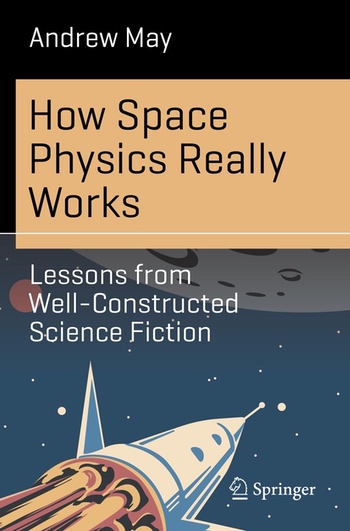Review: How Space Physics Really Worksby Jeff Foust
|
| It’s so bad, he concludes, “that, if physical effects were shown working the way they do in the real world, many viewers would perceive it as an error.” |
May, though, is not here to bury those works that screw up basic physics but instead to elevate those that get it right. The book is a primer of sorts of physics and orbital mechanics, with chapters on topics like gravity, orbital dynamics, and space propulsion. (He stays away from more exotic forms of physics, never mentioning the “dreaded Q-word”—quantum—until the end.) He goes through the details about how they actually work, illustrated by passages from science fiction stories and novels that get the science right. He argues that “outer space is the perfect physics classroom” and that stories that are technically accurate are educational for those unfamiliar with physics and entertaining for those who are.
He leans heavily on a handful of science fiction authors—overwhelmingly male—to make his points in the book. Arthur C. Clarke is the most heavily referenced, along with some contemporaries like Isaac Asimov and Robert Heinlein. He relies less on more contemporary writers, other than Andy Weir of The Martian fame and also retired astronaut Chris Hadfield, who has written one alt-history spaceflight novel (see “Review: The Apollo Murders”, The Space Review, December 13, 2021.) Notably, he avoids television and film, including shows like “The Expanse” and “For All Mankind” that make much more of an effort to be faithful to science and engineering than other shows.
What How Space Physics Really Works shows is that it’s possible for science fiction to be both entertaining and accurate when it comes to spaceflight, at least for some subset of mostly classic written sci-fi. That can be beneficial, and many people have used such works to fuel an interest in spaceflight even if the stories are dated in other ways. But there’s still something to be said about that other camp: disengaging one’s brain and ignoring those technical inaccuracies to instead enjoy the show. In the case of 65, that means rooting for the dinosaurs to get one final kill, of alien intruder Adam Driver, before being wiped out by the Chicxulub impact. Right?
Note: we are using a new commenting system, which may require you to create a new account.
